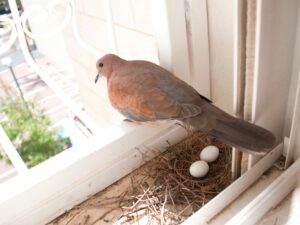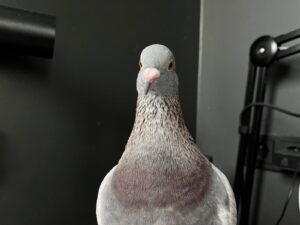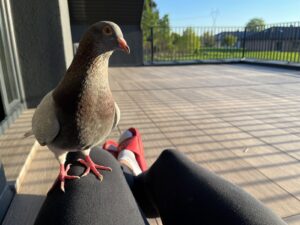Pigeons, with their cooing calls and iridescent plumage, are a ubiquitous presence in our cities and towns. Yet, many of us may wonder, where do these birds actually originate from? Understanding where pigeons are native to offers fascinating insights into their wide-ranging adaptability and resilience.
In this article, we’ll delve into the native habitats of different pigeon species, exploring the various environments that these captivating birds have naturally inhabited and adapted to over countless generations. Join us on this journey into the world of pigeons, as we uncover the geographical roots and ecological niches of these fascinating avian creatures.
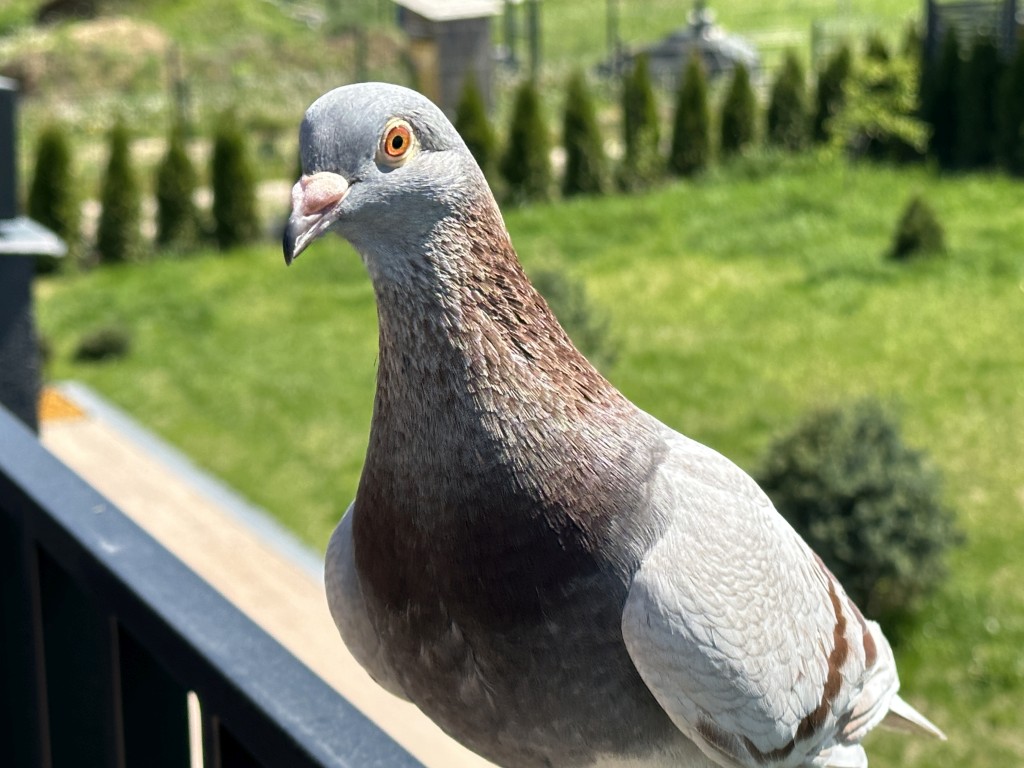
Where are pigeons native to?
Where are pigeons native to? Defining Pigeon Species
As we delve deeper into the world of pigeons, it’s important to understand the diversity within the species. Though many people are familiar with the common Rock Pigeon, the pigeon family, Columbidae, actually comprises a vast range of species with varied appearances, habitats, and behaviors. Understanding these differences is key to appreciating the rich tapestry of pigeon life and their varied contributions to the ecosystems they inhabit. Let’s explore some of the most common pigeon species and what makes each one unique.
Overview of the Diversity within the Pigeon Species
When we delve into the world of pigeons, the diversity we encounter is truly remarkable. The pigeon family, Columbidae, is spread across the globe, except for the driest areas of the Sahara Desert, the high Arctic, and some remote islands. This family comprises over 300 species, displaying a spectrum of sizes, colors, and behaviors. Some species like the Nicobar Pigeon, flaunt a cascade of luminescent feathers, while others like the New Zealand Rock Pigeon or ‘Kereru’, impress with their sheer size.
Their diversity is not limited to appearance alone. Pigeon species occupy a wide array of habitats – from coastal areas, forests, and mountains to the urban environments humans have constructed. The dietary habits of pigeons are just as varied, with different species consuming everything from seeds and fruits to small invertebrates.
Identification and Explanation of Most Common Pigeon Species
Among the vast diversity of pigeons, a few species are particularly notable due to their widespread presence and familiarity to us.
- Rock Pigeon (Columba livia): The most common and recognizable, Rock Pigeons are the birds we often see in city parks and plazas. Originating from Europe, North Africa, and western Asia, humans have introduced them worldwide. They possess a wide range of plumage colors, but their most common variant has a bluish-grey body, two dark wing bars, and a glossy greenish-purple neck.
- Wood Pigeon (Columba palumbus): Common in Europe and parts of Asia, Wood Pigeons are notable for their large size and distinctive white neck patch and wing markings. They are largely arboreal, spending much of their time in trees.
- Mourning Dove (Zenaida macroura): Native to North America, the Mourning Dove is a small, sleek bird, noted for its soft, mournful cooing. They sport a light grayish-brown body and a slightly pinkish hue on the chest.
- Band-Tailed Pigeon (Patagioenas fasciata): This is the largest pigeon native to North America. They are generally blue-gray with a white crescent on the back of their neck and a distinctive banded tail.
- Spotted Dove (Spilopelia chinensis): Native to East Asia, the Spotted Dove is recognized by its light gray head and chest, pink-brown underparts, and distinctive black and white striped collar patch.
Knowing the differences and uniqueness among pigeon species not only deepens our understanding but also enhances our ability to care for and appreciate these versatile birds better.
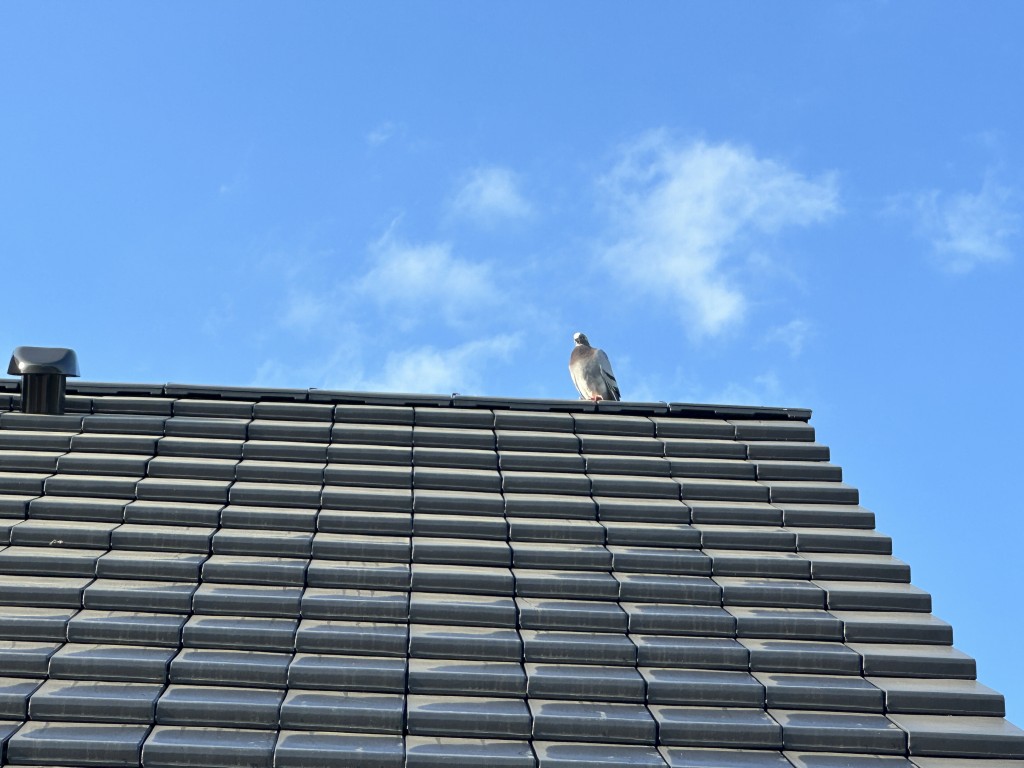
Where are pigeons native to? Understanding Native Habitats
As we progress in our exploration of pigeons, it’s crucial to comprehend what ‘native’ habitats mean and how they influence the life and behavior of these birds. A species’ native habitat represents the environment in which it has naturally evolved over generations and where it’s best adapted to survive and reproduce. By studying these habitats, we can gain insights into a species’ needs, its role in the ecosystem, and how it may respond to changes in its environment. Let’s explore what constitutes a pigeon’s native habitat and the factors that shape these unique ecological niches.
What Constitutes a ‘Native’ Habitat
A ‘native’ habitat represents the ecological environment where a species has spent a large portion of its evolutionary history. It’s the geographical region where a species naturally exists, not having been introduced by human activity. This habitat is ideally suited to support the life cycle of the species, providing the necessary resources such as food, water, shelter, and appropriate conditions for reproduction.
Factors Determining a Species’ Native Region
Several factors influence and determine a species’ native region, including:
- Environmental Conditions: These include the climate (temperature, humidity, and precipitation), altitude, and type of land (e.g., woodland, grassland, coastal).
- Food Source: The availability of a consistent and suitable food source is critical. Pigeons typically eat seeds, fruits, and occasionally invertebrates.
- Predation: The presence or absence of natural predators can influence where a species naturally resides.
- Inter-Species Competition: Competition with other species for resources can also dictate a species’ native habitat.
- Breeding Requirements: This includes factors like suitable nesting sites and appropriate conditions for mating and rearing offspring.
Understanding these factors can help us appreciate why different pigeon species are native to certain regions, and how they might respond to changes in their habitats.
Check my article about What Do Pigeons Eat?
History of Pigeon Distribution
Now that we’ve established a deeper understanding of pigeons and their native habitats, it’s time to delve into the historical perspective of pigeon distribution. Over the ages, the distribution of pigeons across the globe has undergone significant changes, both due to natural processes and human influence. Studying this history provides us with valuable insights into their adaptive abilities and their relationship with changing environments. So let’s traverse through time and examine how the distribution of these resilient birds has evolved and been influenced by human activities.
Explanation of Pigeons’ Historical Natural Distribution
Pigeons are one of the most widely distributed groups of birds in the world, and their historical range is vast. Many pigeon species are native to particular regions where they have adapted to local conditions over thousands of years. For example, Rock Pigeons, the most common and recognizable of the species, originally inhabited the coastal cliffs and inland rock formations of Europe, North Africa, and Western Asia. The Wood Pigeon, on the other hand, is a native bird of the woodlands of Europe and parts of Asia. As for the Mourning Dove, it is indigenous to the diverse habitats of North and Central America.
Impact of Human Activities on Pigeon Distribution
Human activities have significantly impacted pigeon distribution, often causing shifts from their historical natural habitats. This is particularly evident with the Rock Pigeon, which humans have introduced to nearly every continent, primarily due to their role as messengers and food sources. These pigeons have now adapted to thrive in urban settings, and we commonly see them in city parks and buildings worldwide.
However, the human influence hasn’t always been beneficial for pigeons. Habitat destruction, hunting, and the introduction of non-native predators have led to declines in several pigeon populations. Notably, the Passenger Pigeon, which was once abundant in North America, was hunted to extinction by the early 20th century.
In essence, while pigeons have shown remarkable adaptability, the impact of human activities on their distribution underscores the need for responsible interaction with these resilient birds.
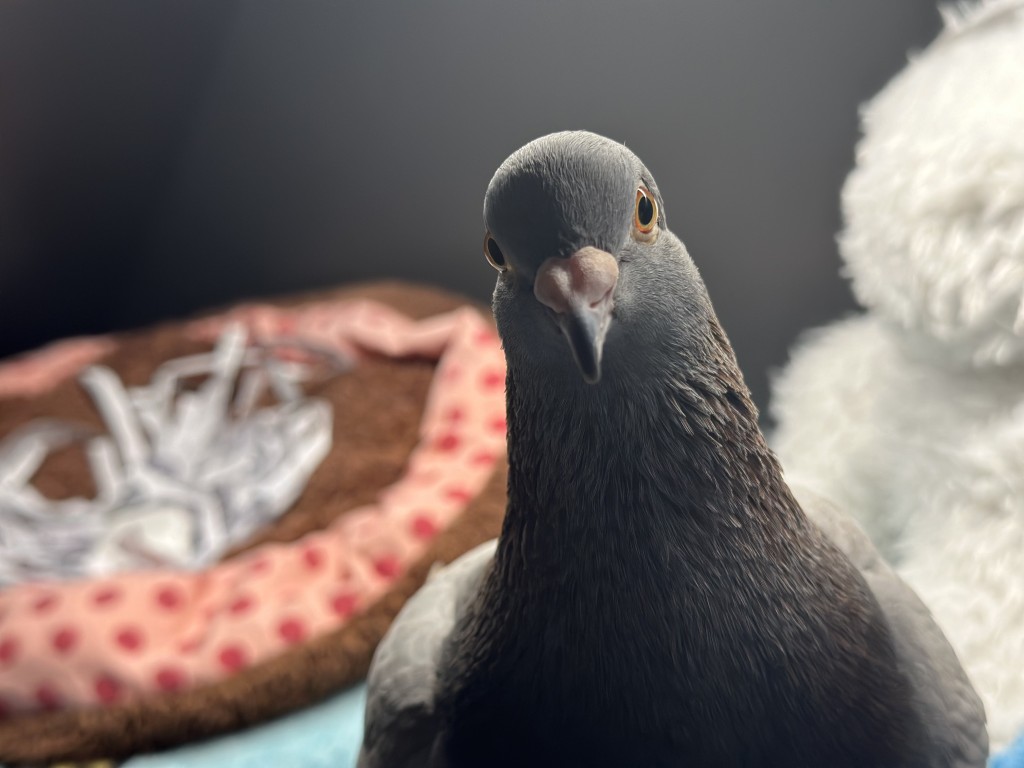
The Native Habitats of Key Pigeon Species
With a grasp of the general distribution of pigeons, let’s narrow our focus and explore the native habitats of some key pigeon species. Each species is uniquely adapted to its native environment, which provides the necessary resources for survival and reproduction. Examining these habitats not only allows us to appreciate the diversity within the pigeon family but also underscores the importance of preserving these natural environments. So, let’s embark on a global tour, from the rocky cliffs favored by Rock Pigeons to the forests that Wood Pigeons call home, and learn more about these remarkable birds and the habitats they inhabit.
Rock Pigeon (Columba livia)
Rock Pigeons, originally native to Europe, North Africa, and Western Asia, inhabited coastal cliffs and mountainous regions. These birds have a strong affinity for rocky habitats, a trait that led to their adaptation to urban environments with high-rise buildings mimicking their natural cliff dwellings.
Wood Pigeon (Columba palumbus)
The Wood Pigeon is a native bird of the woodlands, parks, and gardens of Europe and parts of Asia. It prefers habitats with trees for nesting and open lands or agricultural fields for foraging.
Snow Pigeon (Columba leuconota)
Snow Pigeons are native to the mountain ranges of Central Asia. They inhabit the rocky cliffs and ledges at high elevations, typically above the tree line. During winters, they may descend to lower altitudes in search of food.
Other Notable Species and Their Native Habitats
The Mourning Dove (Zenaida macroura) is native to North and Central America, inhabiting a wide range of habitats from desert to forest edges. The Victoria Crowned Pigeon (Goura victoria), with its spectacular plumage, is native to the lowland and swamp forests of northern New Guinea. Meanwhile, the Nicobar Pigeon (Caloenas nicobarica), recognized for its metallic sheen, inhabits the Andaman and Nicobar Islands in the Bay of Bengal, as well as islands off Southeast Asia. Each of these species is uniquely adapted to its native environment.
Check my article about Are Doves Pigeons?
The Spread of Pigeons: Reasons and Impact
Having explored the native habitats of different pigeon species, we now shift our focus to understand the reasons behind the global spread of these birds and the resulting impacts. Pigeons, with their ability to adapt to varied environments, have found their way into numerous corners of the world, often due to human activities. This global spread, while showcasing their remarkable resilience, has had significant effects on local ecosystems and human societies. Join me as we delve into this topic, shedding light on the reasons for their wide distribution and the consequences that have followed.
Human Activities Leading to the Spread of Pigeons Globally
The spread of pigeons globally is largely influenced by human activities. Several factors contribute to this:
- Domestication: Pigeons, especially Rock Pigeons, have been domesticated for thousands of years for various purposes such as food, sport, and message delivery.
- Introduction to New Areas: People introduced pigeons to new areas intentionally for agriculture or accidentally during travel. This led to their global distribution.
- Urbanization: Pigeons have adapted to urban environments that mimic their natural cliff and rock dwelling habitats, increasing their spread in cities worldwide.
The Impact of Pigeon Spread on Ecosystems and Human Societies
The spread of pigeons, particularly in urban areas, has had a notable impact:
- Ecosystem Impact: Pigeons can affect local ecosystems by competing with native species for food and nesting spaces. However, they can also contribute to ecosystems, for instance, by dispersing seeds.
- Socioeconomic Impact: Pigeons can have economic implications by damaging property due to their droppings. They can also contribute to tourism in cities where their presence is an attraction, such as Trafalgar Square in London or Piazza San Marco in Venice.
- Health Impact: Pigeons can sometimes carry diseases that could potentially be transmitted to humans. However, the risk is generally low, and they are often unfairly stigmatized as being unsanitary.
Understanding these impacts can help inform strategies for managing pigeon populations in a way that balances ecological health, societal needs, and the welfare of the pigeons themselves.
Where are pigeons native to? Adaptability of Pigeons
As we further probe into the realm of pigeons, one of their most captivating characteristics is their exceptional adaptability. Be it atop an urban skyscraper or within a rural woodland, pigeons appear to discover a way to not just endure, but flourish in a vast array of environments. This section will investigate the strategies behind pigeons’ adaptability and why these birds, frequently linked with city landscapes, are genuinely a universal phenomenon. So, let’s set off on this exploration of how pigeons have emerged as one of the world’s most hardy bird species.
Discussion on the Adaptability of Pigeons to Different Environments
Pigeons are one of the most adaptable bird species globally, with an incredible ability to thrive in diverse environments. They’ve been found in habitats ranging from arid desert edges to lush forests, from temperate climates to tropical islands, and from rural settings to bustling cities. This adaptability is largely due to their flexible diet, which primarily includes seeds and fruits but can extend to insects and other available food sources. Their ability to nest in varied locations, from trees to cliffs to human-made structures, also contributes to their adaptability.
Pigeons in Urban Environments: A Global Phenomenon
Pigeons, especially Rock Pigeons, have become a global urban phenomenon. They have been remarkably successful in colonizing cities worldwide, largely because these environments mimic their natural cliff dwellings. Buildings, bridges, and other structures provide plenty of perching and nesting spots, while human activity often provides abundant food sources. Although they can sometimes be seen as a nuisance due to their droppings or perceived as a health risk, pigeons are an integral part of urban biodiversity and can enrich city dwellers’ daily life with their presence.
Check my article about Where Do Pigeons Go At Night?
Conservation Status of Pigeon Species
As we’ve journeyed through the world of pigeons, understanding their native habitats, adaptability, and global spread, it’s important we also consider their conservation status. While some pigeon species have successfully expanded their territories, others face threats that put their survival at risk. This section will offer an overview of the conservation status of various pigeon species, the challenges they face, and underline the importance of preserving their native habitats. Let’s delve into this vital aspect of pigeon ecology and understand what we can do to aid in the conservation of these magnificent birds.
Overview of the Conservation Status of Various Pigeon Species
While some pigeon species, like the Rock Pigeon, are abundant, others face significant conservation challenges. Here are a few examples:
- Rock Pigeon (Columba livia): Listed as ‘Least Concern’ due to their extensive range and large populations.
- Wood Pigeon (Columba palumbus): Also classified as ‘Least Concern,’ although localized declines have been noted due to hunting and habitat loss.
- Victoria Crowned Pigeon (Goura victoria): Listed as ‘Near Threatened,’ primarily due to habitat loss and hunting.
- Socorro Dove (Zenaida graysoni): This species is ‘Extinct in the Wild,’ with remaining individuals surviving only in captivity.
Threats and Challenges to Pigeon Populations
Pigeon populations around the world are under numerous threats, which vary based on their geographical location and species. Habitat loss remains one of the most significant challenges faced by several species. Rapid urbanization and deforestation lead to a loss of their natural habitats, causing a decline in their populations. Furthermore, agricultural practices often disturb their nesting sites and reduce their food sources.
Hunting and poaching for meat and the pet trade have also contributed to the decline of certain pigeon species. For instance, the Victoria Crowned Pigeon is heavily hunted for its meat and impressive crest. Invasive predators, such as cats and rats, can pose substantial threats, especially on islands where pigeons have no natural defenses against them.
Disease poses another threat, particularly for urban pigeon populations that live in close proximity to each other and humans. Diseases can rapidly spread in these dense populations, leading to significant mortality events.
Importance of Preserving Native Habitats
Preserving native habitats is of utmost importance for the survival of all pigeon species. Each pigeon species has evolved to thrive in its specific environment, which provides the right conditions and resources for it to breed and feed.
Loss of these habitats often leads to a decrease in population numbers and could potentially lead to extinction, as seen with the Passenger Pigeon. By preserving their native habitats, we can protect the food sources and nesting sites that pigeons rely on.
Moreover, by preserving these habitats, we are not only protecting pigeons but also a multitude of other species that share the same environment. This preservation is vital for maintaining biodiversity, ensuring the health of ecosystems, and providing humans with essential services like clean air and water.
Effective preservation efforts could include legal protections for important habitats, sustainable land management practices, control of invasive species, and public education about the importance of these habitats and the species that inhabit them.
Where are pigeons native to? Final Thoughts
In closing, understanding where pigeons come from and their journey to where they are now opens our eyes to the fascinating world of these birds. From their diverse species and native habitats to their remarkable adaptability and global distribution, pigeons truly are a testament to nature’s resilience. But as we marvel at their survival skills, let’s not forget that many pigeon species are facing threats and challenges. Let’s use our newfound knowledge to foster a deeper respect for pigeons and play our part in conserving these intriguing birds and their precious habitats. After all, every bird has a story, and every story matters, especially when it’s about our feathery friends we see almost every day – the pigeons.
Where are pigeons native to? FAQs
Where are Rock Pigeons originally from?
Rock Pigeons, also known as city pigeons, originally come from Eurasia and North Africa. They inhabit coastal cliffs and mountains in the wild.
What kind of habitat do Wood Pigeons prefer?
Wood Pigeons are native to Europe and parts of Asia and North Africa. They primarily inhabit woodlands, forests, parks, gardens, and fields.
Where can the Snow Pigeon be found?
Snow Pigeons are native to the mountains of South and Central Asia. They can be found at elevations of up to 4400 meters in the Himalayas and other mountain ranges.
How did pigeons spread globally?
Pigeons, particularly Rock Pigeons, were spread globally by humans. They were carried on ships for food and to serve as message carriers.
How have pigeons adapted to urban environments?
Pigeons, especially Rock Pigeons, have adapted to urban environments by utilizing buildings and bridges as nesting sites, which mimic their natural cliff dwelling habitats.
Are all pigeon species as adaptable as the Rock Pigeon?
No, not all pigeon species are as adaptable as the Rock Pigeon. Many species have specific habitat requirements and can’t thrive outside of those conditions.
Are pigeons native to North America?
The Rock Pigeon, which is the most common species in North America, is not native to the continent. It was introduced from Europe. However, there are native species such as the Band-tailed Pigeon.
How do native habitats influence pigeon behavior?
Native habitats influence everything from a pigeon’s diet to its nesting habits. For example, pigeons from coastal regions may have diets rich in seafood, while city-dwelling pigeons often eat human food waste.
Are any pigeon species endangered due to habitat loss?
Yes, some pigeon species, such as the Socorro Dove and the Polynesian Ground-dove, are considered endangered due to habitat loss and other human-related factors.
How can understanding a pigeon’s native habitat improve its care as a pet?
Understanding a pigeon’s native habitat can inform a pet owner about the bird’s dietary needs, preferred climate, and potential behaviors, helping them to provide more suitable care and a comfortable living environment for the pigeon.

